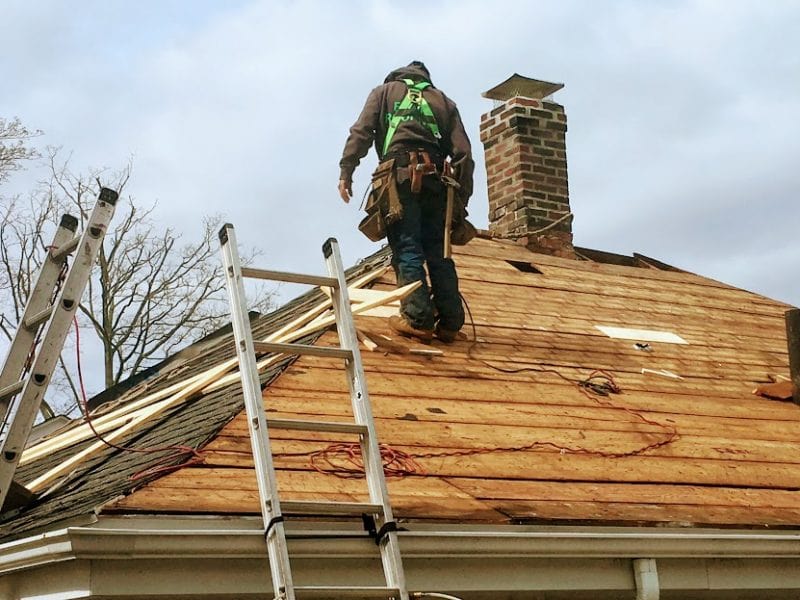Roof Plan

We would like to be sure that the built house will serve as a reliable protection and a cozy home for more than one generation of families. To ensure the durability and durability of the construction, construction should begin with the design of the building, including detailed plans and drawings of the roof of the future house.
What is a roof plan and why do you need it?
The list of documents required for the approval of the project, and includes a roof plan, executed in accordance with the requirements established by law. The plan is carried out in the form of a diagram of the type of building in different projections.
Creating drawings helps to get an idea of the configuration of the house and its equipment. With a well-designed diagram, it is easier to make an accurate estimate for the purchase of materials and components.
Basic information contained in the roof plan
Separate drawings shall be drawn up for each stage of construction, on which the following elements shall be applied:
- coordinate axes, basic parameters and the outer shape of the house;
- Cross profile of the roof;
- the slope and direction of the slopes;
- presence of skates and ribs;
- Location and size of hearing windows, chimneys, ventilation pipes or shafts, evacuation stairs;
- Roof guards, gutters, gutters, gutters;
- Installation sites for rafters, beams, beams and beams;
- schemes of covering, hydro- and heat-insulation laying.
To the scheme of the device of a roof the specification in which the list of applied materials is specified is attached. It is also recommended to draw up detailed diagrams of the location of butt joints. Drawing up of such detailed plans helps to define more precisely with selection of building materials and their placing, and also rationally to distribute expenses on construction.
Features of drawing preparation for the roof plan
Certainly, it is possible to try to create the plan independently by means of graphic editors or drawing tools, but process of designing demands from the executor presence of certain skills and knowledge. By entrusting the development and drawing up of the project to specialists, the future landlord can be sure of the quality of the work done and the reliability of the built building.
It is necessary to consider that on schemes and drawings all sizes and sizes of slopes of slopes of slopes of a roof which in many respects depend on type of a roof covering by all means should be put.
For example, for a roof made of metal is sufficient to slope 30 ° and roofing can be laid at an angle of up to 5 °. The minimum slope for the roof, which is planned to cover the metal profile is an angle of 8 °, while for the wavy slate, this value is from 20 to 30 °.
The following drawing sequence is practiced:
Arrangement of coordinate axes and binding of furnace and ventilation pipe systems to them.
Determining the distances corresponding to the eaves of the eaves and drawing out the roof projection.
In case of identical slopes of slopes, the bisector is taken as the projection of the roof edges and valleys, and the projection of the skates is determined at the intersection point.
It should be remembered that the horizontal projection of the area significantly differs from the actual size of the slope, so on the basis of such a drawing it is impossible to determine the exact volume of the required roofing material.

The choice of roof type is the main difference between a flat roof and a pitched roof
Flat roofing is becoming increasingly popular among homeowners, as it has more functionality. They can be used in the construction of both residential and industrial buildings. Flat roofs are divided into:
- Exploited – where people are allowed to stay, so it is acceptable to arrange household, residential or leisure facilities.
- Unoperated – it is forbidden for people to be present, and special safety precautions must be taken when carrying out repair and maintenance work.
This construction has a multilayer structure and is covered with bituminous, polymeric or combined materials.
Flat roof – what do you need to know to make a plan?
Before designing a flat roof, it is necessary to determine the choice of materials and the inclination of the slope. As a rule, it should be from 2 to 5 °. The entire load lies on the beams laid on the walls of the building, so the calculations should be particularly accurate and provide for all the features of the building.
Traditional tools or specialized programs, including 3D visualization, can be used to plan a flat roof. Specialists will help you quickly prepare the project and calculate all the data correctly.
How to choose a flat roof plan?
Most flat roofed buildings are multi-storey administrative, residential, industrial or commercial buildings. Private homeowners still rarely use this type of roofing, although these houses look very presentable and exclusive.
After all, on such a roof can be equipped not only with a greenhouse or swimming pool, but also a sports ground. Especially a lot of advantages provides a flat roof inverse type.
How do you plan a flat roof?
When drawing, the plan is based on rectangles representing the plan of the house. Inside, lines for skates and valleys are drawn. These lines symbolize the projections of the main walls.
Ground rules:
- All the basic elements are marked with bold lines;
- The plan indicates the location of the chimney, ventilation ducts and other parts;
- When dividing the structure into separate elements, the roof is drawn above each of them.
Part of the rectangles should extend beyond the wall, as the roof must have an overhang.
Structure of inverted (operated) flat roofs
The plan drawn up for the construction of such a roof, including the inversion roof, indicates its structure. The standard construction consists of:
- g/b floor slabs;
- the layer forming the slope;
- Cement screed for surface leveling;
- waterproofing coating;
- Thermal insulation;
- geotextile material;
- ballast layer.
When designing an inverse flat roof of an operating type, a properly planned drainage system is added to the list.
Flat roof drain system
When choosing a roof plan, special attention should be paid to the drainage system for melt and rainwater. Due to the minimal slope of the roof in winter, snow will accumulate on the roof surface and rainwater will accumulate in the off-season, which will significantly increase the load on the walls of the building.
Experts recommend paying attention to the way of installation of the internal system of gutters. In this case, the roof surface is divided so that every 150 m2 was placed at least 1 riser pipe.
Slanting roof – what do you need to know to make a plan?
The pitched roof is made in the form of a roof installed at a certain angle. These roofs can have one, two or more slopes. They are also divided into attic and attic-type structures. The most common roofs – gable, which can be installed on any house.
